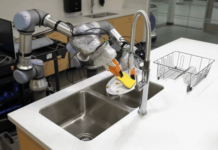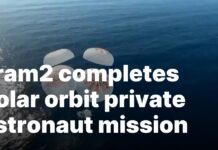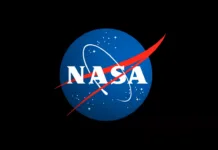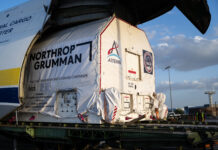NASA has recently made a significant decision to partner with Columbus Technologies and Services Inc., based in El Segundo, California. This collaboration is focused on providing essential electrical and electronic engineering support to the Goddard Space Flight Center, located in Greenbelt, Maryland. This move is a key part of NASA’s ongoing efforts to advance its space exploration and research initiatives.
Understanding the Contract Details
The partnership is formalized under the Electrical Systems Engineering Services IV contract. This is a cost-plus-award-fee indefinite-delivery/indefinite-quantity contract, which essentially means that the final cost is not fixed. Instead, the contractor is reimbursed for allowable expenses to the extent prescribed in the contract, plus an additional fee that is awarded based on the quality of performance. This type of contract is often used when the scope of work is not entirely predictable, making it a suitable choice for complex and evolving projects like those at NASA.
The maximum estimated value of this contract is a substantial $1.1 billion. This figure underscores the scale and importance of the work that is to be carried out. The contract’s base period of performance is set to begin on April 9 and will extend over the course of five years. This timeline indicates a long-term commitment to enhancing NASA’s capabilities in electrical and electronic engineering.
The Scope of Work Involved
Under this new agreement, Columbus Technologies and Services Inc. will be involved in a variety of tasks that are crucial to the functioning of NASA’s Goddard Space Flight Center. The responsibilities will span several key technical divisions. These include:
– **Electrical Engineering Division**: This division is primarily concerned with the design, development, and testing of electronic systems that are essential for NASA’s missions. The contracted support will aid in refining and advancing these systems to ensure they meet the rigorous demands of space exploration.
– **Instrument Systems and Technology Division**: Here, the focus is on the technological development of instruments used in space missions. The contractor will assist in the creation and enhancement of these instruments, which are pivotal for data collection and analysis.
– **Software Engineering Division**: This division deals with the development of software that operates the various systems and instruments. Columbus Technologies will provide support to ensure that the software is robust, reliable, and capable of handling the complexities of NASA’s missions.
– **Mission Engineering and Systems Analysis Division**: This division plays a strategic role in planning and analyzing NASA’s missions. The support provided will help in the effective management and execution of these missions, ensuring that they are conducted efficiently and successfully.
In addition to these responsibilities, Columbus Technologies will also contribute to the management and development of hardware for space flight, airborne, and ground systems. This includes the design, testing, and fabrication processes, which are critical for the overall success of NASA’s projects.
Technical Jargon Explained
For those who may not be familiar with some of the technical terms used in this context, here’s a brief explanation:
– **Cost-plus-award-fee contract**: This is a type of contract where the contractor is reimbursed for all legitimate costs incurred during the project and is awarded an additional fee based on performance. This method is used when projects have uncertain scopes and require flexibility.
– **Indefinite-delivery/indefinite-quantity (IDIQ)**: This is a contracting method that allows for undefined quantities of services or supplies during a fixed period. It provides NASA with the flexibility to procure what is needed, when it is needed, without having to renegotiate terms for each order.
Broader Implications and Insights
This contract marks a significant step forward in NASA’s strategic plan to enhance its engineering capabilities. By engaging Columbus Technologies, NASA is ensuring that it has the necessary expertise and resources to continue its pioneering work in space exploration. The collaboration will likely lead to advancements in technology that could have far-reaching effects beyond just space missions.
Developments arising from this partnership could influence various industries, especially those related to electronics and technology. Innovations in electronic systems and hardware designed for space might find applications in consumer electronics, telecommunications, and even healthcare, showcasing the broad impact of NASA’s research and development efforts.
Furthermore, the partnership highlights the importance of collaboration between government agencies and private companies. By leveraging the expertise and capabilities of the private sector, NASA can focus on its core mission of exploring and understanding space, while also driving economic growth and technological innovation.
Conclusion
In summary, NASA’s decision to collaborate with Columbus Technologies and Services Inc. represents a pivotal moment in the agency’s continued commitment to excellence in space exploration. The Electrical Systems Engineering Services IV contract will provide critical support across various technical divisions at the Goddard Space Flight Center. By enhancing its engineering capabilities, NASA is setting the stage for future breakthroughs and discoveries that could transform our understanding of the universe.
For readers interested in learning more about NASA and its programs, additional information can be found on their official website at [NASA’s website](https://www.nasa.gov).
For more Information, Refer to this article.


































